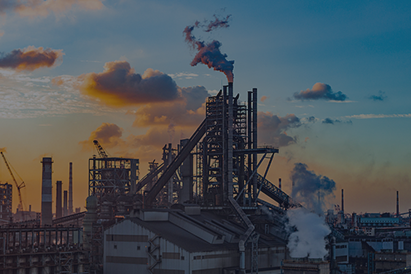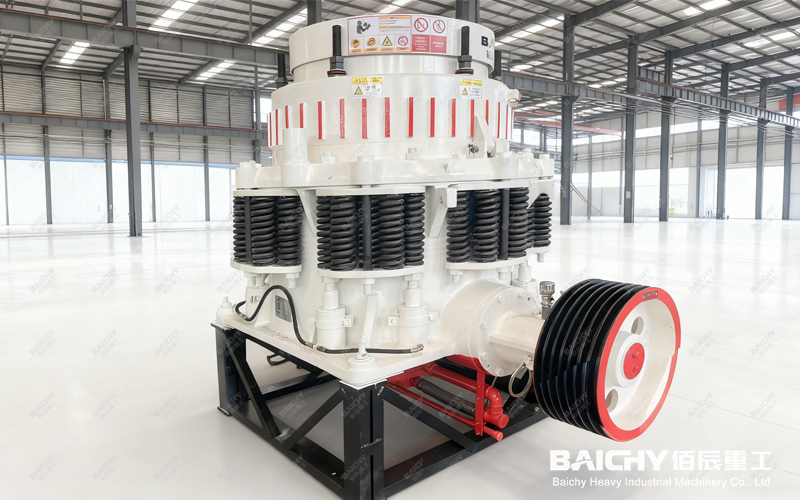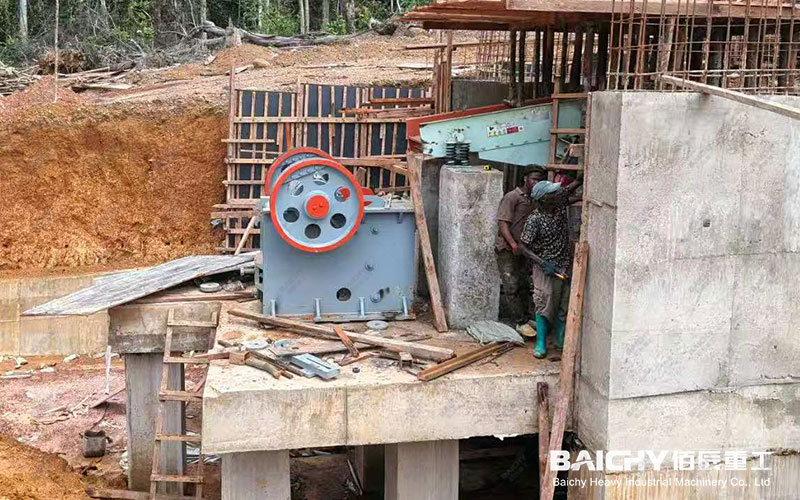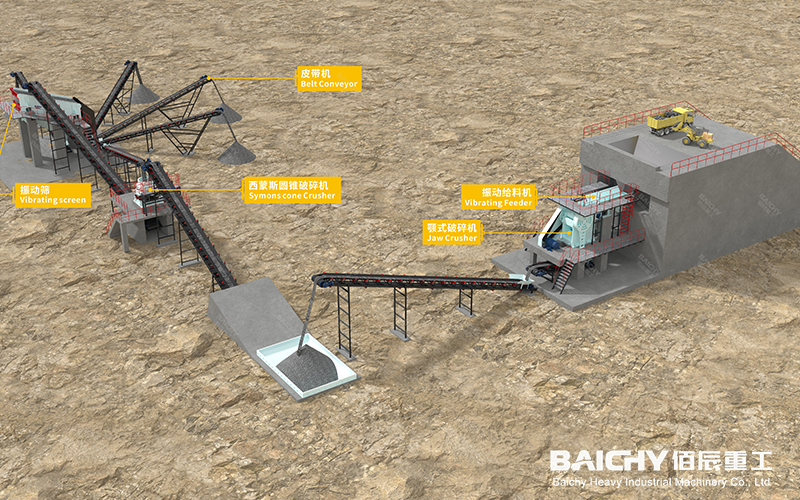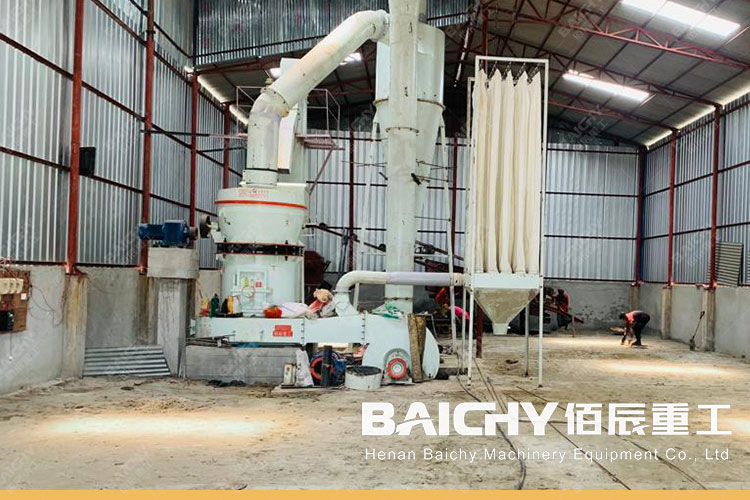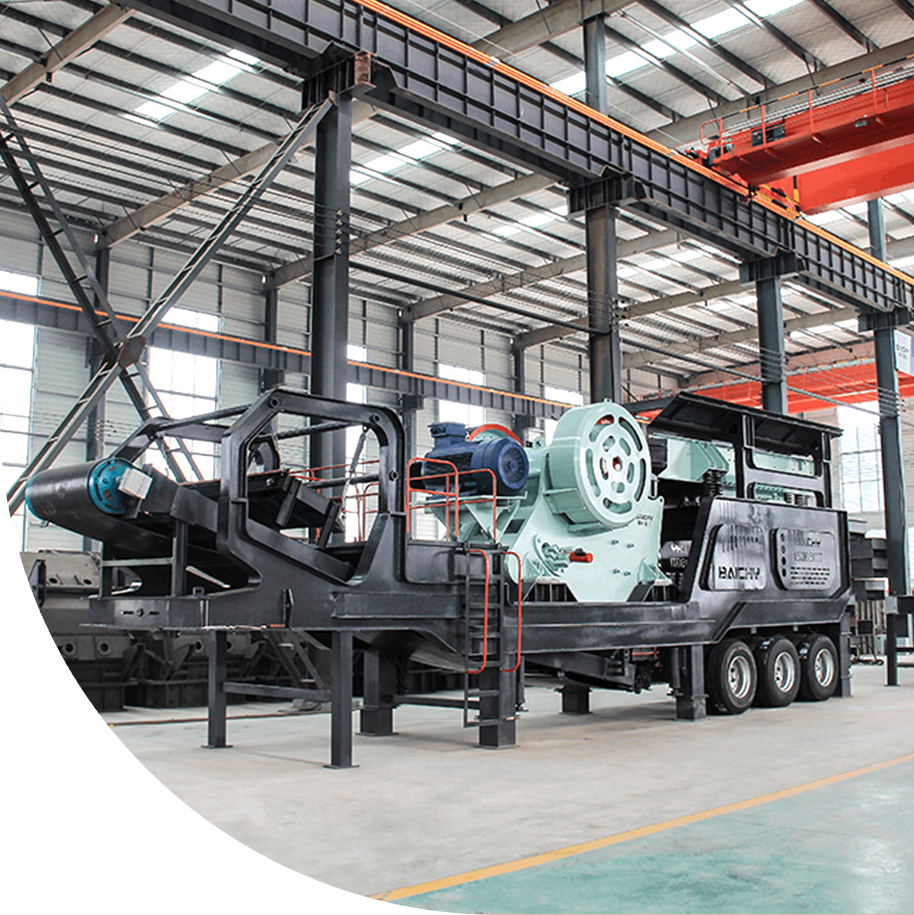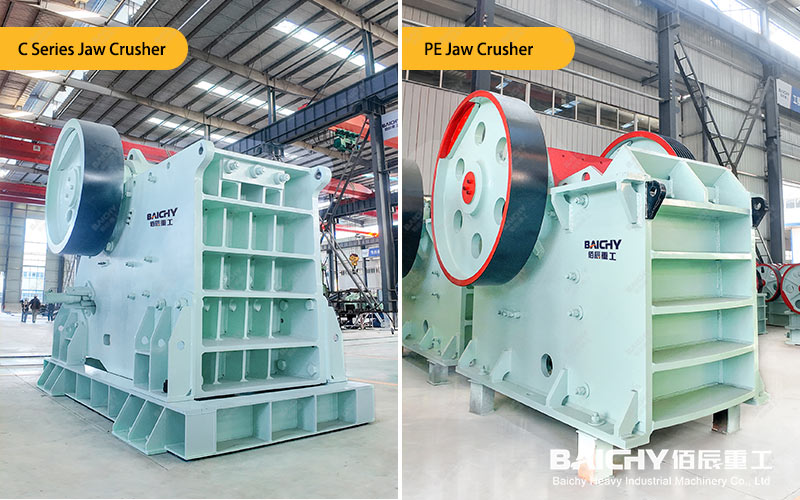
In the fields of mining, sand and gravel aggregates and construction waste treatment, jaw crushers have always been the "core weapon" of coarse crushing. However, with the iteration of technology, the C Series jaw crusher is gradually replacing traditional models with its revolutionary design and becoming a new benchmark for high efficiency, energy saving and intelligence. This article will deeply analyze the differences between the two from the five dimensions of crushing efficiency, energy consumption, maintenance cost, intelligence and applicability to help you make a wiser choice!
1. Crushing efficiency and capacity: deep cavity design vs. traditional shallow cavity, which one can "eat hard goods" better?
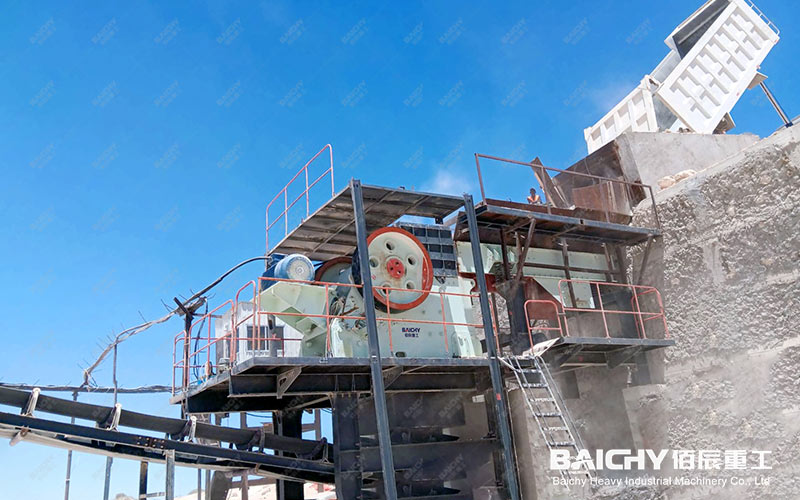
C Series Jaw Crusher-large feed, high throughput, 30% increase in capacity
• Deep cavity + optimized moving jaw trajectory: The asymmetric crushing cavity designed by computer simulation allows the material to form "laminated crushing" in the cavity, which not only reduces blockage, but also improves the crushing ratio. The single-machine capacity is 20%~30% higher than that of traditional models.
• Super large feed opening: Taking C160 as an example, its feed opening size is 1600×1200mm, which can directly swallow 1.2-meter large ore, reducing the cost of primary blasting, and is particularly suitable for high-hardness materials such as granite and basalt.
• Intelligent discharge adjustment: Hydraulic or electric adjustment of the discharge opening, more precise particle size control (±5mm), ensuring uniform particle size of the finished product and reducing the return rate.
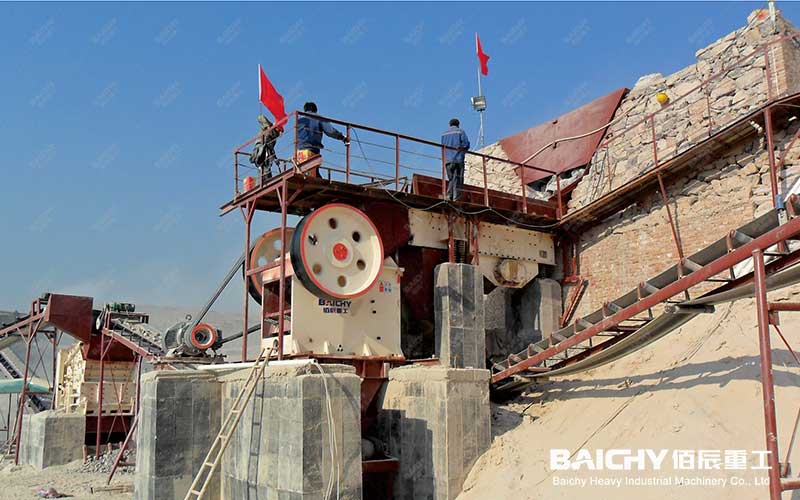
Traditional jaw crusher-limited efficiency, easy to jam the machine
The cavity is shallow, the material fluidity is poor, and the wet and sticky material is easy to adhere to the jaw plate, resulting in a decrease in production capacity.
Mechanical discharge adjustment is time-consuming and labor-intensive, and the particle size fluctuates greatly (more than ±10mm), affecting the operating efficiency of downstream equipment.
User value: Under the same power, the C series jaw crusher can process 50~100 tons of material per hour, directly reducing the cost of crushing per ton!
2. Energy consumption and environmental protection: saving electricity means saving money, who is more "green"?
C Series Jaw Crusher - Energy Saving Pioneer, Power Consumption Reduced by 25%
• Variable Frequency Drive Technology: The motor speed can be automatically adjusted according to the actual load to avoid energy waste of "big horse pulling a small cart", and it saves 15%~25% energy compared to traditional fixed speed motors.
• Hydraulic Cavity Clearing System: When encountering unbreakable objects (such as iron blocks), the movable jaw can be quickly released to reduce the risk of equipment overload and reduce unplanned downtime losses.
• Low noise design: With shock-absorbing bearings and closed structure, the working noise is ≤85dB, which meets the environmental protection mining standards.
Traditional jaw crusher - high energy consumption, invisible increase in maintenance costs
The motor often runs at full speed, and consumes full power even at low load, and the electricity bill for long-term operation is high.
There is no automatic protection function, and manual cleaning is required when the machine is stuck, which increases safety risks.
User Value: Based on an annual output of 1 million tons, the C Series jaw crusher can save 100,000 to 200,000 yuan in electricity bills per year!
3. Life of wear-resistant parts and maintenance cost: Whose jaw plate is more "durable"?
C series jaw crusher - super long life, maintenance cost reduced by 60%
• High manganese steel + laser strengthening: The jaw plate is made of special alloy steel and has been laser surface hardened. • Wear resistance is improved by 40%, and the service life can reach 6~12 months (traditional models are only 3~6 months).
• Modular quick-change design: The jaw plate, bearings and other key components are fixed with pins, and the replacement time is shortened from 8 hours to 2 hours, greatly reducing downtime losses.
• Centralized lubrication system: Automatic timed oiling to ensure that key parts such as bearings and elbow plates are fully lubricated and reduce wear.
Traditional jaw crusher - frequent replacement, high hidden costs
The jaw plate is made of ordinary material. When crushing highly abrasive materials, it needs to be replaced every 3 months, and the annual maintenance cost increases by more than 30%.
The efficiency of manual lubrication is low, and it is easy to cause early damage to the bearing due to poor lubrication.
User value: The C series jaw crusher saves more than 150,000 yuan in wear-resistant parts and labor maintenance costs per year!
4. Intelligence and automation: unmanned vs. manual inspection, which is more reliable?
C series jaw crusher-intelligent monitoring, fault warning, reduce sudden downtime
• PLC control system: real-time monitoring of bearing temperature, vibration, current and other parameters, automatic alarm when abnormal, to avoid "minor illness into major illness".
• Remote operation and maintenance: support Internet of Things (IoT) access, engineers can remotely diagnose through mobile phones/computers and make maintenance plans in advance.
• Automatic adjustment of discharge port: no manual intervention is required, and the crushing particle size is automatically adjusted according to production needs to ensure the stability of finished product quality.
Traditional jaw crusher-relying on experience, high risk
Faults rely on manual listening and hand touch judgment, with a high misjudgment rate. Sudden downtime may paralyze the entire production line.
Without data records, it is difficult to optimize production parameters.
User value: C series jaw crusher can reduce unplanned downtime by 80%, and the annual production benefit exceeds 500,000 yuan!
5. Applicable scenarios and flexibility: Fixed vs. mobile, which one can adapt to the future better?
C series jaw crusher-one machine for multiple uses, suitable for mining and construction waste
• Mobile version: optional tire or crawler chassis, fast transfer, suitable for temporary production lines of sand and gravel aggregates, recycling of construction waste and other scenarios.
• Multi-functional adaptation: By changing the type of jaw plate, it can crush a variety of materials such as rock, concrete, asphalt, etc., with a higher return on investment.
Traditional jaw crusher-bulky and poor adaptability
Most of them are fixed installations, and relocation requires disassembly, which is time-consuming and labor-intensive.
Only suitable for single material crushing, low flexibility.
User value: C series jaw crusher can shorten the project investment recovery period by 30%, especially suitable for small and medium-sized sand and gravel plants and urban construction waste treatment projects!
Summary: C series jaw crusher - the "performance monster" in the crushing industry
| Comparison items | C series jaw crusher | Traditional jaw crusher |
| Productivity | Increase by 20%~30% | Low, easy to clog |
| Energy consumption | Save 15%~25% of electricity | High power consumption |
| Maintenance cost | Wear-resistant parts life doubled, maintenance reduced by 60% | Frequent replacement, high hidden costs |
| Intelligence | PLC+remote monitoring, reduce downtime by 80% | Rely on manual labor, high risk |
| Flexibility | Fixed & mobile optional, adapt to a variety of scenarios | Only fixed, difficult to relocate |
Purchase suggestions:
• Limited budget + fixed production line → Traditional jaw crusher (but long-term operating costs may be higher).
• Large mines, mobile crushing, intelligent needs → C series jaw crusher (faster return on investment).



